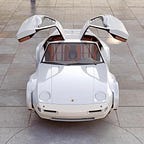Eye Tracking — The Next Evolution in Virtual Reality
Virtual reality environments are one of the most mesmerizing experience in gaming and entertainment today, and it’s still in its infancy. If you’ve ever picked up an Oculus Rift, Oculus Quest, or HTC Vive, you know that stepping into these 3 dimensional worlds of interactive gaming, useful applications for productivity , and social networking platforms open up a whole new avenue of connection. With the ushering in of hand tracking for some wireless virtual reality headset, the user experience has become even more engaging an intuitive. Eye tracking will be as impactful, if not greater! Though it still bears its technological challenges, companies will be sure to implement this technology in there devices to give the full digital immersion users have always dream virtual reality could be!
Eye tracking is the process of measure the movement of the eye and the point of gaze relevant to the eye. The angle of the eye is measured using infrared laser censors and algorithms are able to calculate and trace where the eye is looking, while cameras capture and track the movement. The eyes will then be used as a type of pointer in the virtual environment, pinpoint what the user focuses on (similar to hand controller). Gaze data can be noisy, and considering how to classify gaze data and recognize gaze patterns will effect how this tool will be used in virtual environments. It can provide context and inform the system that the user is paying attention to a specific object or area.
Eye tracking works best with multimodal input. Eye saccades may be an issue as this can cause the pointer to jitter or jump in unintentional ways. If you paired eye gaze tracking with gesture feedback from hand tracking, pushing a button on a hand controller, or voice commands, this would maximize the data received from a user interacting within the VR headset.
The main purpose of eye tracking will not only be to gain feedback and data for various industry, from medical to marketing, but to increase the experience within a virtual environment in a natural, human way. This is called “foveated rendering”. This can reduce the processing power needed and create a more immersive environment for the user, making it closer to what we view in the real world. To accommodate for changes in our vision, our eyes perform vergence: the simultaneous rotation of both eyes in opposite directions in or to maintain binocular vision for objects at different depths. Convergence is the ability to rotate the eyes inward and divergence is the rotation of the eyes outward. Foveated rendering, like in the real world, can increase your peripheral blur and depth perception. Depth perception is reduced when peripheral blur is absent.
Though eye tracking will be a valuable attribute to virtual reality, the interaction design should always remain as the focus for the overall experience. Using gaze tracking passively so the eyes can maintain their natural function will be key to incorporating this feature in virtual worlds and applications. It is important to know that gaze tracking will not solve every problem and is not appropriate for all tasks. What scenario it is applied to should be considered.
Various virtual reality companies are already implementing eye tracking into their hardware like Pico. Soon, most if not all virtual reality hardware companies will use the wide range of benefits that comes with gaze tracking.
